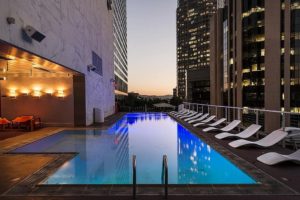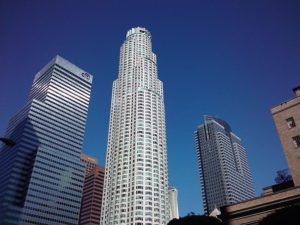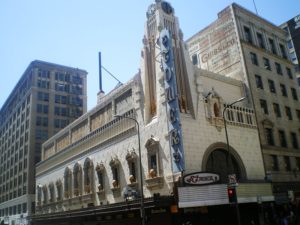The Rialto Theatre was one of the first to feature stadium-style seating without a balcony. It opened on May 21, 1917, showcasing the silent film ‘The Garden of Allah’, accompanied by the Quinn Symphony Orchestra under the direction of composer Joseph Carl Breil. Two years later, Sid Grauman took over, remodeled it, and renamed it as Grauman’s Rialto, running it until 1924.
The exterior was originally designed by architect Oliver P. Dennis as a Greek Renaissance structure, with three sets of arched windows and a classic pediment over its facade. A remodel in 1923 by theatrical architect William Lee Woollett completely altered its appearance, bestowing it with a modified Georgian façade, adorned only by two rectangular windows flanked by fluted pilasters and two small round windows.
Inside, the theater’s proscenium was framed by massive columns, and the side walls resembled ancient stonework. The plaster ceiling beams were painted to look like wood. In the 1930s, the Rialto gained a new marquee featuring a spectacular Art Deco neon display, one of the largest on Broadway.
The theater underwent several remodels over the years to accommodate new technologies and changing fashions. Unfortunately, almost none of the original interior elements remain – the plaster was removed, and the decorative paint and stencil work were painted over. The auditorium was dismantled, and the lobby area was converted into a commercial space.
Fortunately, the historic Rialto marquee still stands and was declared a Cultural Historic Monument of the City of Los Angeles #472 in 1989.
In 2013, Urban Outfitters announced plans to rehabilitate the Rialto Theatre as part of the revitalization of the historic Broadway area in downtown Los Angeles. It now serves as a store for this clothing brand.



